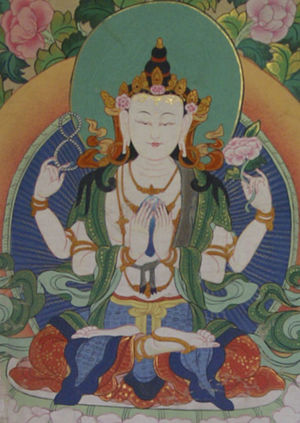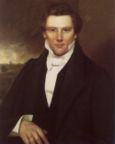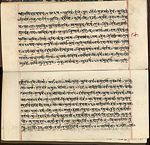Portal:Religion
2008/9 Schools Wikipedia Selection. Related subjects: Portals; Religion
|
Religion is the adherence to codified beliefs and rituals that generally involve a faith in a spiritual nature and a study of inherited ancestral traditions, knowledge and wisdom related to understanding human life. The term "religion" refers to both the personal practices related to faith as well as to the larger shared systems of belief.
In the larger sense, religion is a communal system for the coherence of belief—typically focused on a system of thought, unseen being, person, or object, that is considered to be supernatural, sacred, divine, or of the highest truth. Moral codes, practices, values, institutions, traditions, and rituals are often traditionally associated with the core belief, and these may have some overlap with concepts in secular philosophy. Religion can also be described as a way of life. The development of religion has taken many forms in various cultures. "Organized religion" generally refers to an organization of people supporting the exercise of some religion with a prescribed set of beliefs, often taking the form of a legal entity (see religion-supporting organization). Other religions believe in personal revelation and responsibility. "Religion" is sometimes used interchangeably with " faith" or " belief system," but is more socially defined than that of personal convictions.
Christmas (literally, the Mass of Christ) is a holiday in the Christian calendar, usually observed on 25 December, which celebrates the birth of Jesus.
According to the Christian gospels, Jesus was born to Mary in Bethlehem, where she and her husband Joseph had travelled to register in the Roman census. Christ's birth, or nativity, was said by his followers to fulfill the prophecies of Judaism that a messiah would come, from the house of David, to redeem the world from sin. Early Christians celebrated more the subsequent Epiphany, when the baby Jesus was visited by the Magi. Efforts to assign a date for his birth began some centuries later. The precise chronology of Jesus' birth and death as well as the historicity of Jesus are still debated. In predominantly Christian countries, Christmas has become the most economically significant holiday of the year, and it is also celebrated as a secular holiday in many countries with small Christian populations. It is largely characterized by exchanging gifts within families, and by gifts brought by Santa Claus or other mythical figures. Local and regional Christmas traditions are still rich and varied, despite the widespread influence of American and British Christmas motifs through literature, television, and other media.
Joseph Smith, Jr. ( 23 December 1805 – 27 June 1844) was an American religious leader who founded the Latter Day Saint movement, a restorationist movement giving rise to Mormonism. Smith's followers declared him to be the first latter-day prophet, whose mission was to restore original Christianity, said to have been lost after a Great Apostasy. This restoration included publication of the Book of Mormon and other new scripture in addition to the Bible, and the establishment of the Church of Christ. As a leader of his religion, he was also an important political and military leader in the American West.Although Smith's early Christian restorationist teachings were similar in many ways to other movements of his time, Smith was and remains a controversial and polarizing figure, both because of his collection of religious and social innovations, and as a result of his large and devoted following, which has continued to grow to the present day.
The Rigveda (Sanskrit: ऋग्वेद ṛgveda, a tatpurusha compound of ṛc "praise, verse" and veda "knowledge") is an ancient Indian religious book, that is a collection of Vedic Sanskrit hymns dedicated to Rigvedic deities. It is counted among the four Hindu sacred texts ( shruti) known as the Vedas. Geographical and ethnological passages in the Rigveda provide evidence that the Rigveda was composed between 1700–1100 BCE (the early Vedic period) in the Punjab ( Sapta Sindhu) region of the Indian subcontinent. The Rig Veda is the oldest of all known religious books, and the oldest book in Vedic Sanskrit or any Indo-European language. The composition of the Rigveda is conventionally dated to before 1500 BCE. Some writers have traced astronomical references in the Rigveda dating it to as early as 4000 BC, a date well within the late Mehrgarh culture.
There are astounding similarities between the locations and characters in RigVeda, Avestan (Old Iranian language texts) and the Mittani civilization. For example, Rigvedic characters like Indra, Varuna, Mitra, Vrtra, and the Ashwins also occur in the Avestan texts and the Mittani civilization. Moreover, the Andronovo civilization which has been found to be the site of the earliest chariot culture (around 2500BC) is thought to have been the home of the RigVedic Aryans. Today, this text is revered by Hindus around the world, primarily in India and Nepal. Its verses are recited at prayers, religious functions and other auspicious occasions.
|




